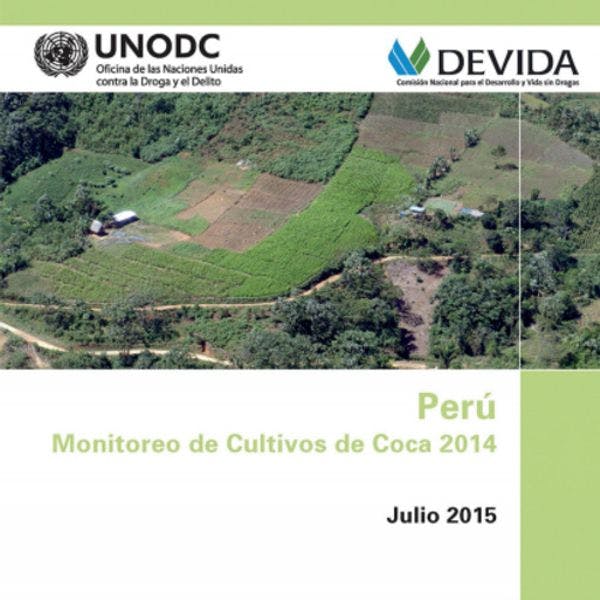Coca cultivation monitoring 2014: Peru
According to the latest crop monitoring survey, presented today in Lima by UNODC and the Government of Peru, coca bush cultivation in the country fell almost 14 per cent in 2014 compared to 2013. The area used for cultivating the raw material for cocaine production fell from 49,800 hectares (ha) to 42,900 ha.
Speaking at the Survey's launch, UNODC's Representative in Peru, Flavio Mirella, highlighted the comprehensive approach taken by the Government, which, together with its decision to increase annual eradication goals, includes pursuing complementary pre- and post-eradication strategies. Additionally, he acknowledged the country's "enhanced efforts and investments for promoting alternative livelihoods in coca growing areas, for building more capacity and for a greater State presence in areas affected by coca cultivation."
In 2014, the Peruvian Government reported around 31,200 ha of eradication, 30 per cent more than in 2013. The areas that have been impacted the most by these actions are the regions of Aguaytía, High Huallaga (including Monzón), Pichis-Palcazú-Pachitea, Orellana, and Caballococha. Together, these regions saw a reduction of almost 60 per cent, from around 10,400 ha to some 4,200 ha. Other notable production areas, such as the Apurimac, Ene and Mantaro River Valleys (VRAEM) region, La Convención y Lares, and Inambari Tambopata remained stable compared to 2013.
Production of sun-dried coca leaves in 2014, which are used by drug traffickers to produce coca paste and cocaine hydrochloride, stood at some 100,800 mt. In 2014, the VRAEM region accounted for more than 67 per cent of production, due in part to notable higher yields per hectare of more than 3.5 mt, compared to the national average of 2.4 mt. As in previous years, some 9,000 mt of the total production is used for the traditional practice of coca leaf chewing.
The farm-gate price of dry coca leaf remained the same as a year before, at $4.3 per kilogram, which is still relatively high compared to the average price from 2008-2012 of $3.2 per kilogram. Starting in 2013, the price rose above $3 per kilogram of coca leaf as a result of a growing demand, the significant reduction of the coca growing areas, and the corresponding lower supply of coca leaf.
The average price of coca leaf by-products, however, registered decreases: while coca paste price saw a relatively small decline of 2.3 per cent - from $863 to $843 per kilogram - the average price of cocaine hydrochloride decreased 10 per cent between 2013 and 2014, from $1,310 to $1,178 per kilogram. Seizures of the latter, meanwhile, went from around 13,300 kilograms in 2013, to almost 18,700 kilograms in 2014, a 40 per cent increase. Additionally, seizures of coca paste increased 2.5 per cent in the same period, from 10,800 kilograms to around 11,100 kilograms.
Until 2010, drug traffickers smuggled coca paste and cocaine mostly by land routes heading to Peru's ports and its border with Bolivia. However, as noted in the Survey, routes have been diversified and drugs are now also transported by air. The Peru coca survey relies on space imaging and aerial video verification. The accuracy and detail of this year's survey has increased, producing more accurate results.
Keep up-to-date with drug policy developments by subscribing to the IDPC Monthly Alert.
Downloads
Regions
Related Profiles
- United Nations Office on Drugs and Crime (UNODC)
